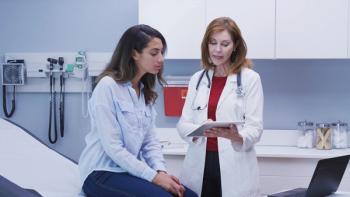
Creative Media and Messaging of Cancer Information
I decided to take on a personal video challenge during the month of November, to share cancer information with patients and caregivers. I created a series of livestream videos on Facebook each weekday.
Oncology nurses often find themselves in the position of having to answer important questions from patients and family members. These questions usually have much lengthier explanations than the nurse has time for. Since our job is education, we use employer-dictated shortcuts like pre-approved brochures and special medical handouts printed off the computer.
Most patients tell me they never read most of the handouts they get; it all goes in a pile somewhere and gets lost until long after the information is needed. Therefore, it’s important for the nurse to find creative ways to get the message across.
When nurses feel like they are repeating the same information all the time, it becomes routine: We devise shortcuts, and it becomes easy to inadvertently leave out important concepts that need better explanation for the patient, as it is the first time they have heard the same message that we can recite in our sleep.
The message needs to be in a place where it will be seen, heard, absorbed, and remembered. In your unit or infusion center, bulletin board displays or posters can be hung in waiting areas to teach patients and caregivers. Repeated exposure can help get the message across, too.
I decided to take on a personal video challenge during the month of November, to share cancer information with patients and caregivers. Motivated by the
We all need to challenge ourselves at times and step out of our comfort zone. My comfort zone does not include being in front of a camera, so I decided that is what I was going to do, speaking as much as possible from the heart, with very few notes, and the camera holding me accountable, as videos are unable to be edited once they are uploaded.
For my project, I set up a series of short videos about improving cancer literacy for the layperson. This is important because of the widespread misunderstandings, myths, and misconceptions around basic cancer facts. People don’t bother to learn about cancer until it slaps them in the face with a crash course.
My goals for this video series were to answer some of the most common questions around cancer for those who might be curious but afraid to ask, and to teach people some useful tips on how to prepare in advance, as much as possible, for an unexpected cancer diagnosis, either for themselves or their loved ones.
If you feel like the information your patients are receiving isn’t being absorbed or remembered, start looking for other ways to communicate these concepts effectively. You can save patients an enormous amount of frustration, confusion and time, and you might even save lives. Make sure you can do this without violating the policies of your institution and always be sure to let people know it’s not medical advice.
To see my livestreaming series, you can visit the
Newsletter
Knowledge is power. Don’t miss the most recent breakthroughs in cancer care.































































































